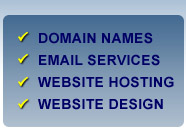Updated: 07/2010
Browsers
When we speak of Browsers, we refer to the application software used to view websites on the internet. You are using one right now to view this website. Early on in web development, there were only a handful of browsers available, which quickly blossomed into dozens of variants by the late 1990's. Although many of these still exist, the more dominant browser engines have evolved to take the lead in the market share.
Which is the most popular Browser?
For the majority of the late 90's and early-mid 00's, the Trident Browser Engine, used by Microsoft Internet Explorer (MSIE or IE), was the most popular browser, if you include the many versions of IE available (namely IE8, IE7, IE6, and IE5.X). In second place was the Mozilla/Gecko browser (previously related to other browsers such as Netscape, Safari, Konquerer), engine in use by Firefox (FF). By the time of this article (July, 2010) (resource: W3S), FireFox was the leading browser (46.6% of internet viewers use it).
So FireFox is the best?
Like many things, popularity is largely a personal preference. On the basis of website design, and seasoned internet usage, most PC users agree that FireFox is the best browser to use, based on it's adherence to Web Standards, and flexible usage and personalization (through the use of upgrades and plugins). IE6, although previously one of the most popular browsers ever (at one time holding a 71% share of the Browser market), was one of the biggest violators of Web Standards and a significant obstacle for web designers. IE7 and IE8 have made huge leaps forward toward Web Standards compatibility, almost rivaling FireFox, but the new look and feel of IE7 and IE8 has kept a number of IE6 users from upgrading. Like with most things however, we stick to what we know and what we are comfortable working with. IE7 and IE8 departed from the traditional Explorer layout, which has made the transition difficult for long time IE users. This is unfortunate, since IE8, from a web standards and web design viewpoint, is probably the best browser version of Explorer available.
Time out...what are Web Standards?
Web Standards are, in the most simplistic terms, a way to ensure consistency across web browser platforms. The use of web standards helps ensure that a website using proper code techniques appears the same on all viewing applications. This is difficult enough, considering the many methods used to create web site content. Now throw in the fact that every Browser interprets the code differently (even if all code was completely standardized), and you begin to see the immense problems that occur, even if we ignore small handheld systems like PDA's and cellphones that can view web content, let alone different operating systems (Mac vs. PC vs. Unix/Linux), screen resolutions, etc. Massive efforts have been under way for some time to create these Web Standards, which is a constantly evolving process due to technological advances.
Web designers are extreme proponents of Web Standards (you may even consider them fanatics), since it helps to ensure that the websites they create are displayed the same on every browser. As it is, in order to do so, a web designer has to add significant amounts of code to their websites to 'cheat' the appearance in different browsers, or make multiple versions of their websites for each of the popular browsers. I think we can all agree that this is a waste of time and resources. When FireFox was released, it caused considerable amount of joy in the hearts of Web Designers. The code they were creating, for the first time, displayed as it should have in a web browser. This was a huge sigh of relief, considering that at the time, IE6 was taking over the reigns from IE5.X, and as we mentioned earlier, displayed web pages considerably different than what they should have. The recent releases of IE7 and then IE8 is almost on par with Firefox (2.0 or 3.0) in regards to how it processes and displays web site code.
Frustration amongst web designers has grown so much over IE6, that there is actually a grass-roots campaign to stop all code modification/hacking to websites in order for them to display nicely in IE6. In effect, they are hoping that if users of IE6 get tired of seeing enough 'broken' websites, they will be forced to upgrade to IE8 (or another compliant browser). The thing to keep in mind is that if you see a 'broken' website in IE6 or earlier versions, it is more than likely not truly broken, and not the fault of the designer. Naturally, we can't say this is true in all cases since there are bound to be some lazy/uneducated web designers out there, or, as in most cases, the web designer is simply following the demands of the client they work for.
Okay, so bottom line, which one should I use?
The best answer is: 'Whichever one you are most comfortable with'. On behalf of Web Standards organizations, web designers, and web application coders, we strongly suggest FireFox. If however, you are more familiar with MicroSoft Explorer, we strongly recommend IE8. These two browsers, along with the current versions of Safari, Konquerer, Opera, and Netscape, are the most compliant browsers to date, and we can only hope they continue to improve on this. Chrome, on the otherhand, the recent addition to the Browser jungle by Google, is significantly lacking in terms of privacy and web standards compliance. Most professional web developers will agree on at least this one thing: Avoid Google Chrome.
Related Resources:
- W3C - World Wide Web Consortium: An international consortium of some of the Originating and Current Leading Developers of the World Wide Web. They are responsible for creating and communicating Web Standards to web developers.
- Web Standards Project - Much as how the W3C is responsible for web development, the WSP is oriented more to how such standards are accessed, such as Browsers and internet accessible devices.
- Download FireFox 3.0 (or latest version)
- Download Internet Explorer 8.0 (or latest version)
- Download Safari
- Download Opera
- Download Netscape Navigator
- Download Konqueror




